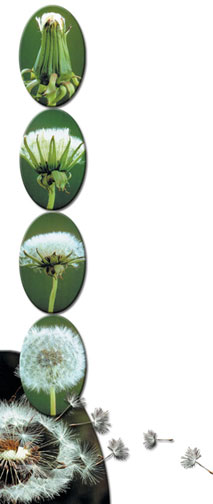 The first stage of the transformation of a seed into a plant is called sprouting. The seed under the soil begins to move and springs to life only by the combination of different factors such as heat, moisture and light. Before that happens, the seed is in a kind of lethargic state. When the time comes, the seed awakens from its sleep and begins to sprout. Sometimes, the sprouts cannot find themselves in a suitable environment to grow. If the sprouts continue to grow in a shady environment, without enough sunlight, photosynthesis will be much more difficult to carry out for them.
The first stage of the transformation of a seed into a plant is called sprouting. The seed under the soil begins to move and springs to life only by the combination of different factors such as heat, moisture and light. Before that happens, the seed is in a kind of lethargic state. When the time comes, the seed awakens from its sleep and begins to sprout. Sometimes, the sprouts cannot find themselves in a suitable environment to grow. If the sprouts continue to grow in a shady environment, without enough sunlight, photosynthesis will be much more difficult to carry out for them.
So, how does a plant grow in an environment like this?
Phototropism: Sprouts follow the light source
If the sprout finds itself in a shady environment as it emerges on the soil, it immediately changes the direction of its growth towards the source of the light. This process is called Phototropism and shows that sprouts have a photosensitive navigation system. If we compare plants with animals and humans, plants have more advantages for sensing light. The reason for this is that animals and humans can detect light only by using their eyes but the navigation system of the plants is sharper, so they never lose their direction. They can find their direction easily by using their perfect navigation system which is based on light and gravity.
Meristem: Growing parts which make the best use of the nutrition source
Besides their photosensing systems, plants also have special growing parts in which cell division occur. These tissues are called Meristem and can usually be found on the root tips and on the stem tips of the plant.
The shape of each plant is determined according to the growing direction of this Meristem tissue. If the cells in the growing parts of the plant grow in similar shapes with each other during the development of the sprout, this growth ensures the flatness of the stem. If the growth of these cells is more in one edge and less in the other, the stem will grow in a curved shape. If the conditions are suitable, this growth in the plant starts at the same time in all the growing parts.
The plant’s stem exiting from the sprout moves immediately towards the light which it urgently requires. On the other hand, the roots which provide the plant with the necessary water and minerals from the soil perform their growth in a most efficient way by using their guiding systems that detect gravity. At first sight the root extensions of these plants seem to spread randomly in all directions into the soil but in reality, with the help of this sensitive system, the root extensions move in a controlled fashion like missiles locked onto a target.
The growth process, which is controlled by this system, may differ from plant to plant because the growth in plants occur according to their different genetic information. As a result of this genetic difference, the maximum growth rates also differ in plants. For example, while the maximum growth time for a cornstalk is "six weeks", for a beech tree it is a quarter of a century. (Guy Murchie, The Seven Mysteries of Life, USA, Houhton Mifflin Company, Boston, 1978, p.57)
Harmonious effort that causes plants to grow
Germination is the first stage of the formation of a plant which grows into tons of weight and meters of height from the tiniest object. The roots of a plant run along the soil and the branches reach up to the sky slowly. At the same time, different systems inside the plant (systems which will carry the nutrition, lengthen and widen the plants body and the hormones which will stop them when necessary) appear together. No setbacks or delays occur in the appearance of these systems. Everything which is necessary for the plant develops at the same time. This fact is very important. For example, while the reproduction mechanism of a plant develops, the carrier pipes (nutrition or water carrying pipes) also develop at the same time. Otherwise, for example, in a plant where there is no reproduction mechanism, the carrying pipes have no importance. Development of the roots also will have no importance in the absence of the reproduction mechanism. Since a plant like this cannot continue its lineage without a reproduction mechanism, there will be no need for any additional mechanisms. As we can see here, in this perfect structure of the plants, which is interdependent and fully harmonious, there is a plan in their formation which cannot occur by random chance. There is no place for a stage by stage development in this structure which evolutionary scientists claim.
The Special Creation in Seeds
Lets bury a seed and another material which has the same dimensions, weight and molecule mixture of the seed together into a particular depth and wait for some time. We will see that our seed comes out of the earth by penetrating the soil until a certain amount of time passes according to the seed's type. But we can never see the other material coming out from the soil, regardless of how much time we wait for it. The result will never change regardless if you wait for hundreds of years or thousands of years for that material to come out of the soil. The reason for this difference is surely in the special creation of the seed. The necessary information for this process is encoded into the genes of plants. All the systems in the plants proves their Creation clearly. All the details we see above, point out that, forming of the plants can never happen by chance. On the contrary, these details prove that there is a perfect order in the appearence of the plants. Surely a perfect order like this is one of the proofs of existence of our Lord, Who knows and creates everything with their smallest details. Just the formation of a seed in the first stage of development in the plant clearly shows the inimitable creation of Allah, Who is also our Creator and the Owner of the only true superior power. As a matter of fact, Allah declares this truth in the Qur’an as thus :
Surely a perfect order like this is one of the proofs of existence of our Lord, Who knows and creates everything with their smallest details. Just the formation of a seed in the first stage of development in the plant clearly shows the inimitable creation of Allah, Who is also our Creator and the Owner of the only true superior power. As a matter of fact, Allah declares this truth in the Qur’an as thus :
"Have you thought about what you cultivate? Is it you who make it germinate or are We the Germinator? If We wished We could have made it broken stubble. You would then be left devoid of crops, distraught" (Surat al-Waqia,63-65)


